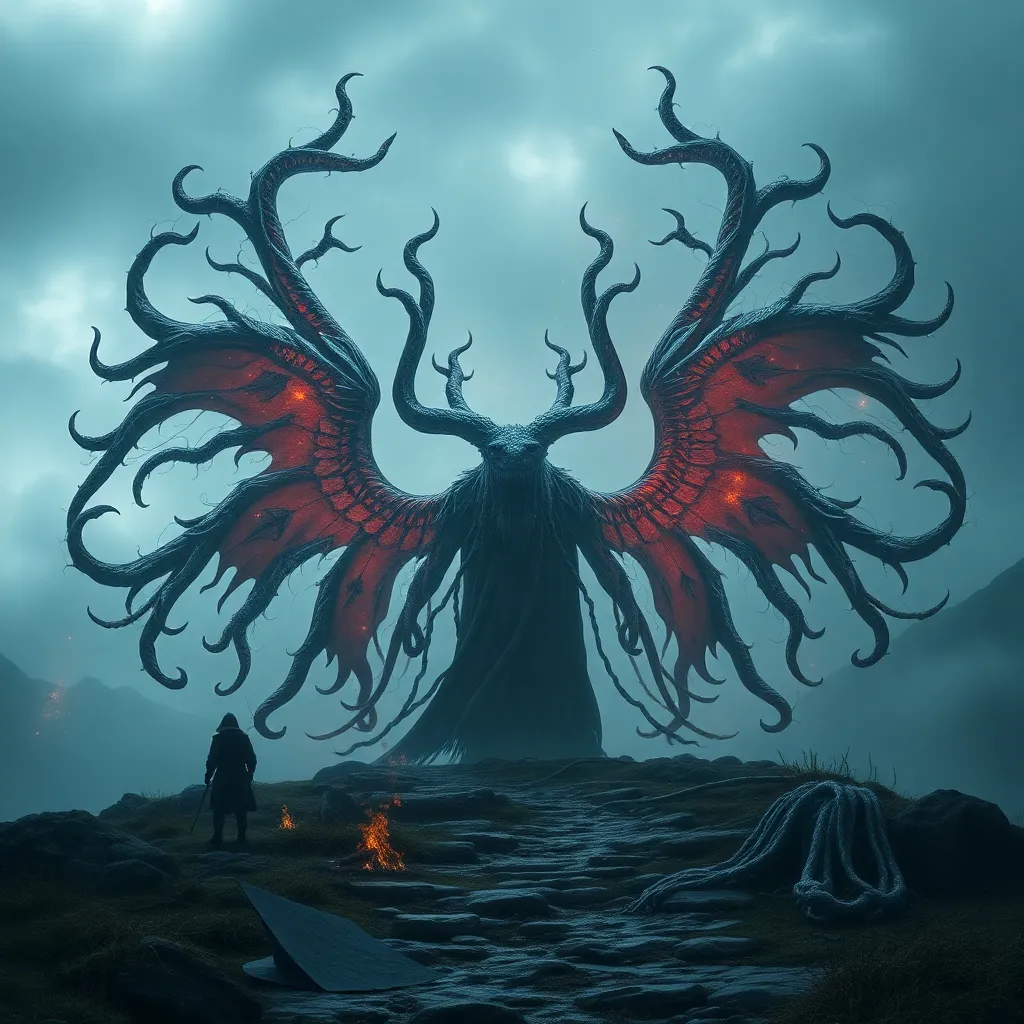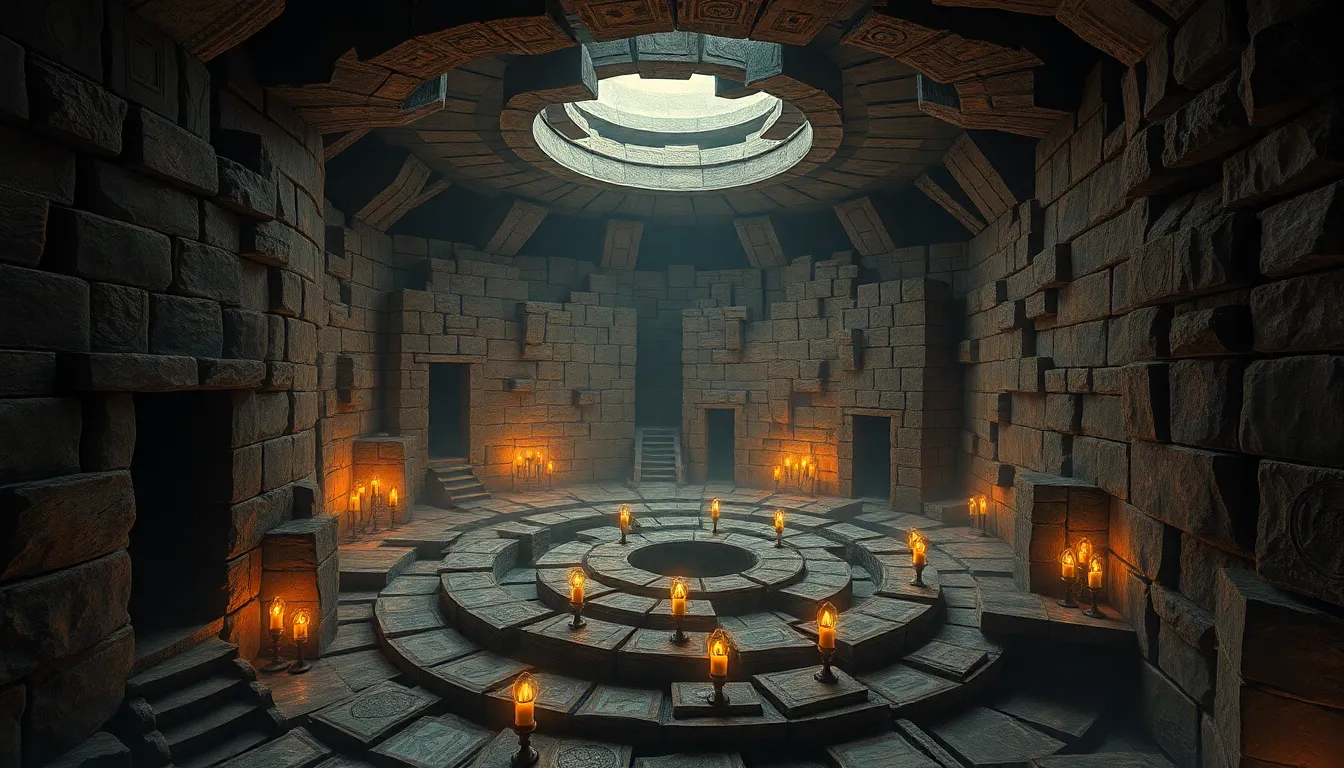The Cosmic Eagle: Understanding Garuda’s Symbolism and Iconography
I. Introduction to Garuda
Garuda, known as the Cosmic Eagle, is a prominent figure in various mythologies, especially within Hindu and Buddhist traditions. This mythical bird is revered not only for its majestic form but also for its rich symbolism that transcends cultures and religions.
In Hinduism, Garuda is depicted as the mount of Lord Vishnu, embodying the virtues of strength, loyalty, and bravery. In Buddhism, Garuda represents the triumph of the spirit over the physical world. The exploration of Garuda’s symbolism and iconography reveals insights into the shared cultural heritage across Asia and the enduring significance of this mythical creature.
II. Historical Background of Garuda
A. Origins in Hindu mythology
Garuda’s origins trace back to ancient Hindu texts, notably the Vedas and the Puranas. He is born of the sage Kashyapa and Vinata, symbolizing the connection between the earthly and the celestial. The tales of Garuda often portray him as a fierce protector and a symbol of divine intervention.
B. Evolution through Buddhist texts
As Buddhism spread across Asia, Garuda’s figure evolved, acquiring new meanings and interpretations. In Buddhist texts, Garuda is often depicted as a protector of the Buddhist faith and a destroyer of evil, embodying the qualities of wisdom and enlightenment.
C. Representation in Southeast Asian cultures
In Southeast Asia, Garuda is integrated into local mythologies. Countries like Thailand and Indonesia celebrate Garuda’s symbolism through national emblems and folklore, demonstrating the creature’s significance beyond the Indian subcontinent.
III. Symbolism of Garuda
A. Garuda as a symbol of power and strength
Garuda is often revered as a potent symbol of power and strength. His ability to soar through the skies represents not only physical strength but also spiritual fortitude. This duality makes Garuda a significant figure in both warrior and religious contexts.
B. Representation of freedom and transcendence
As a bird, Garuda embodies the essence of freedom and transcendence. He is considered a messenger between the heavens and the earth, symbolizing the aspiration to rise above worldly troubles and attain a higher state of consciousness.
C. Connection to the sun and divine knowledge
Garuda is also associated with the sun, often depicted flying towards it. This connection signifies enlightenment and the pursuit of divine knowledge, emphasizing the importance of wisdom in overcoming ignorance.
IV. Iconographic Features of Garuda
A. Physical characteristics: wings, beak, and posture
Iconographically, Garuda is depicted with a large, powerful body, expansive wings, and a sharp beak. His posture is often dynamic, conveying motion and strength, which adds to his majestic appearance.
B. Common artistic representations across cultures
- Hindu art often depicts Garuda with a human body and bird features, symbolizing his dual nature.
- Buddhist representations emphasize his more ethereal qualities, focusing on his role as a protector.
- Southeast Asian art frequently showcases Garuda in traditional attire, embodying local cultural elements.
C. Variations in iconography in different traditions
Across different traditions, Garuda’s iconography can vary significantly. In Hinduism, he is often shown in a more anthropomorphic form, while in Buddhism, he might appear more bird-like, emphasizing his spiritual attributes.
V. Garuda in Religious Texts
A. Role in Hindu scriptures (e.g., Mahabharata, Ramayana)
In the Mahabharata and Ramayana, Garuda plays crucial roles, often depicted as a fierce warrior who assists the gods and protects dharma (righteousness). His legendary battles against serpents highlight his strength and valor.
B. Significance in Buddhist teachings
In Buddhism, Garuda is mentioned in various sutras as a symbol of wisdom and strength. He is often featured in stories that illustrate the triumph of good over evil, reinforcing his role as a protector of the Dharma.
C. Depictions in Jain and other indigenous traditions
Garuda’s presence extends to Jain texts, where he is respected as a celestial being. Indigenous cultures in Asia also have unique interpretations of Garuda, often blending local beliefs with the overarching mythological themes.
VI. Garuda in Art and Architecture
A. Famous sculptures and paintings depicting Garuda
Garuda has been a popular subject in various forms of art. Notable sculptures include the majestic Garuda Vishnu Kencana in Bali and the Garuda statue in Jakarta, Indonesia. Paintings often portray him in dynamic poses, emphasizing his speed and power.
B. Garuda in temple architecture and iconography
Many temples in India and Southeast Asia feature Garuda in their architecture. He is often carved into temple walls, symbolizing protection and divine watchfulness over the sacred spaces.
C. Influence on modern art and popular culture
Garuda’s image has permeated modern culture, influencing artists and designers worldwide. His representation can be found in various forms of media, from fashion to graphic design, showcasing his timeless appeal.
VII. Contemporary Interpretations of Garuda
A. Garuda in modern spirituality and new age beliefs
In contemporary spirituality, Garuda is often invoked as a symbol of strength and protection. New age beliefs embrace Garuda’s qualities, viewing him as a guide for personal and spiritual growth.
B. The resurgence of interest in traditional symbols
As interest in traditional symbols grows, Garuda has found renewed significance in various spiritual practices. Workshops, retreats, and art exhibitions celebrate his attributes, fostering a deeper understanding of his mythological roots.
C. Garuda’s relevance in today’s globalized society
In today’s globalized society, Garuda serves as a bridge between cultures. His symbolism resonates with a diverse audience, promoting values of strength, freedom, and transcendence, which are universally appreciated.
VIII. Conclusion
Garuda stands as a powerful symbol interwoven into the fabric of multiple cultures and religions. His significance transcends time, representing strength, freedom, and divine knowledge across various traditions.
The enduring legacy of Garuda’s symbolism and iconography invites further exploration and appreciation, encouraging individuals to connect with their cultural heritage and the shared myths that unite us. As we delve deeper into the stories and meanings behind Garuda, we uncover not only the essence of this cosmic eagle but also the universal truths that inspire humanity.
![]()


